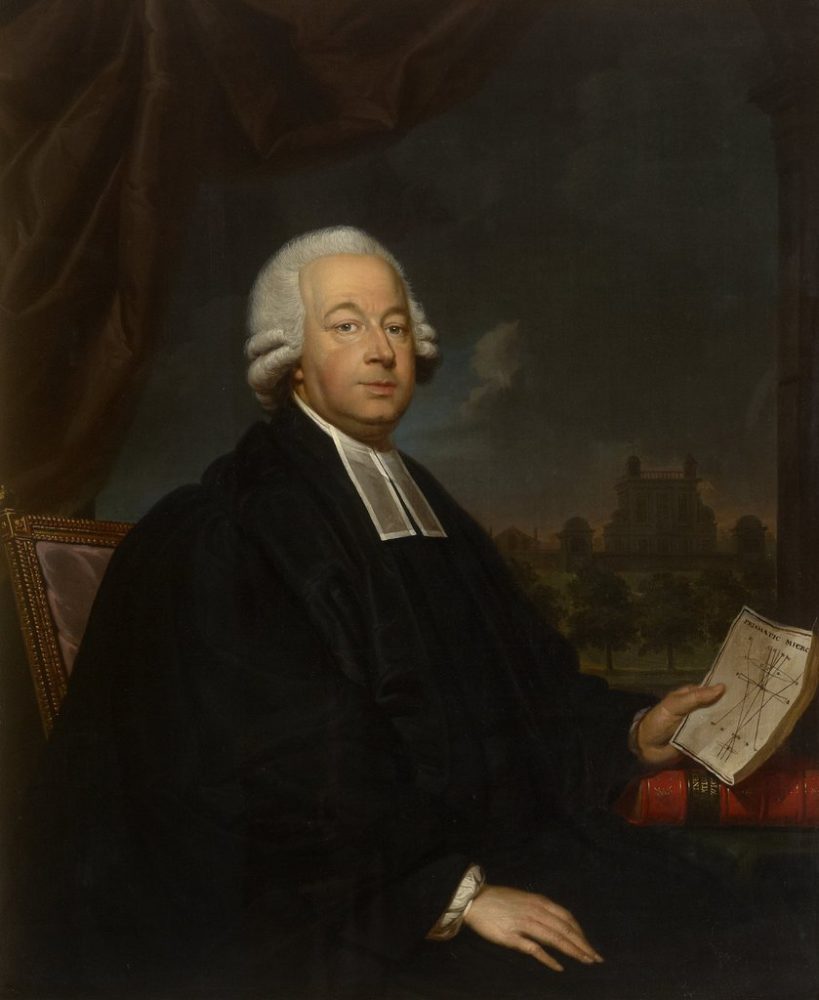- Scroll to:
- About

(6 October 1732 – 9 February 1811)
Rev. Dr Nevil Maskelyne FRS was the fifth British Astronomer Royal (1765–1811). Born in London to Edmund Maskelyne and Elizabeth (née Booth), he was first appointed an astronomer by the Royal Society to observe the transit of Venus in 1761 from St Helena. Bad weather prevented the observations, but he used this trip as an opportunity to test a method of determining longitude from the position of the Moon. This turned out to be an acceptable method while better chronometers were being developed. The Astronomer Royal is also famous for having scientifically measured the mass of the Earth.
Maskelyne took an active role in the Board of Longitude, though he never submitted a proposal for a chronometer of his own. Through his influence, he promoted Thomas Earnshaw’s work, having previously asked him to produce a regulator (a highly accurate pendulum clock) for the newly-established Armagh Observatory.
Armagh Observatory’s first Director, Reverend J. A. Hamilton, was in correspondence with his Greenwich Observatory counterpart even prior to taking up Archbishop Robinson’s appointment. The accuracy of his measurements of the 1782 transit of Mercury impressed both his Armagh benefactor and the Astronomer Royal – indeed, Maskelyne considered them superior to those made at the Royal Observatory in Greenwich. The Troughton equatorial telescope was purchased for Armagh Observatory on recommendation from Maskelyne, who was very impressed with its novel design. He equipped Greenwich with a number of Troughton instruments. He also donated to Hamilton a celestial globe which had been dedicated to the Astronomer Royal, and assisted with purchases of other instruments for the new observatory.






